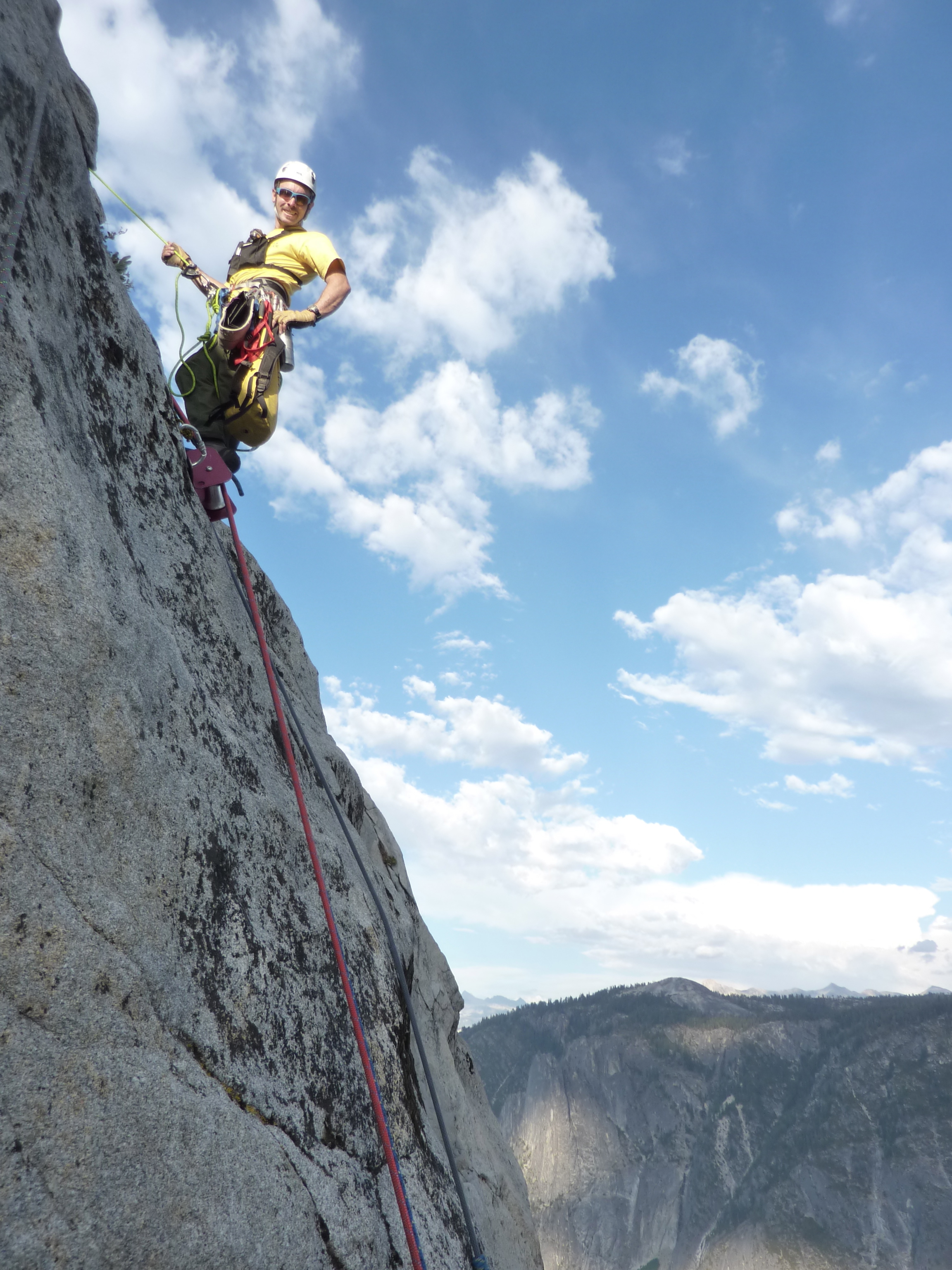When one rope became stuck near the top of the route, the rappellers cut it and continued rappelling with two ropes until they reached Camp V, which is about one third of the way down the Nose, just above the Great Roof. One of the rappellers began rappelling from Camp V, but when he was just above the Great Roof, he realized that he had rappelled too far to his left and that the next rappel anchor he sought was out of reach to his right. He attempted, unsuccessfully, to swing to it but also continued descending until he was hanging free, at the end of his ropes, about five feet below the lip of the Great Roof.
The partner at the Camp V anchor above was unable to assist in any way, so he called 911 to request help. The rappellers had family band radios, so a YOSAR team member with a family band radio went to El Capitan Meadow and coached the stuck rappeller on how to ascend the rope using Prusiks. After several hours of slow progress, the rappeller had ascended 40 feet-but still had 200 feet more reach Camp V. He was exhausted, vomiting, and almost out of water, so he decided he was unable to continue. The YOSAR team member ensured the rappeller was safely secured to the rope system and not in free-hanging terrain when he ended the radio assist.
In order to extricate the rappellers, YOSAR decided a technical lowering and raising operation would be necessary. The park's contract helicopter flew 14 YOSAR members and their equipment to the summit of El Capitan that evening. Beginning at about 6 pm, two rescuers were lowered to the party. One stayed with the partner at Camp V while the other was lowered with the stranded rappeller safely to the ground. Then the rescue team pulled the ropes back up from the ground to Camp V and hauled the partner and second rescuer to the summit. They arrived just before a thunderstorm appeared with heavy rain and lightning. The team retreated to a safer location until the storm passed, and then spent the night on the summit. They were extracted by helicopter the next morning.
This climbing party had some multi-pitch traditional climbing experience but no big wall or aid climbing experience. This incident is a good example of the dangerous cascade of events that can occur when a team is ill-prepared for what is a very serious undertaking. Although climbing El Capitan and other long big wall routes has become increasingly popular, it is still a committing endeavor that requires extensive climbing experience and rope/rigging knowledge in order to be completed safely. Climbers and rappellers attempting to rappel big walls should ensure they have the skills and equipment to troubleshoot and adapt in the event that things do not go as planned. Being able to ascend a rope is a fundamental skill that no rappeller, especially one on such a large cliff, should be without. The consequences of unpreparedness can be, and have been, grave for many parties, and mounting a rescue mission always causes risks for rescuers.

|
August 12, 2012
On Saturday, August 4, the Yosemite Emergency Communications Center received a request for assistance from two rappellers who had gotten off route and subsequently stuck while attempting to rappel the Nose climbing route on El Capitan (about 2,900 feet vertically, with about 23 rappels). The party had hiked up the Yosemite Falls trail the day prior and camped at the top of El Capitan. The rappellers began rappelling from the summit on Saturday morning. They were equipped with figure-eight descenders, a rack of camming devices and stoppers, climbing shoes, and three ropes. One of the two rappellers had a climbing helmet.
|
Last updated: August 12, 2012
